May 23, 2025 | 21:29 GMT +7
May 23, 2025 | 21:29 GMT +7
Hotline: 0913.378.918
May 23, 2025 | 21:29 GMT +7
Hotline: 0913.378.918
I was delighted to discover that the direction and strategy for the development of a Korean agricultural product were extraordinary when I visited Gyeongbokgung Palace and experienced ginseng smoothy at Han-ok old village in the heart of Seoul capital, where it was sold for an unbelievable price of approximately 180,000 VND. The path from the garden to the market is a precise circle. From raw ginseng to dried gingsen, ginseng candy to ginseng jelly, these products are not only sold in stores and supermarkets, but they are also a popular tourist product on the table. They are used to make Ginseng chicken soup (Samgyetang) and ginseng smoothies.
After two years of planting, they transport the ginseng seedlings to the ginseng field. These ginseng were consumed by Koreans in three fundamental forms: fresh ginseng, white ginseng, and red ginseng, during a prolonged cultivation period of 7-8 years, which included the soil preparation stage. Ginseng producers are able to maintain their livelihoods and incomes by adhering to the consumption method.

Lai Chau ginseng has more than 52 types of Saponin, superior to other types of ginseng in the world. Photo: Vu Dang Thanh Hai.
Furthermore, Korea implements contemporary preparation methodologies through various dry and stream methods to develop a diverse array of ginseng product lines that cater to the needs of consumers, with the assistance of the government and cooperative in ginseng trading. Korean ginseng is a natural export from the country, as it is of unquestionable quality and comes in a variety of designs and packaging. This, of course, enables ginseng producers in Korea to generate a substantial income from foreign currency in addition to maintaining a consistent income.
In addition to Korean ginseng, which is renowned for its high Saponin content, ginseng from countries such as China and North America is also highly esteemed on a global scale.
Over the past decade, scientists and ginseng experts from numerous countries have verified that Vietnamese ginseng, specifically Ngoc Linh ginseng or Lai Chau ginseng, contains more than 52 types of saponins, a substantially higher concentration than other ginseng varieties worldwide. However, why is Korean ginseng still regarded as the most superior?

Vietnamese ginseng takes 5~7 years to harvest, causing many difficulties for Vietnamese ginseng farmers. Photo: Le Khanh.
This is not an accident. Korea has a structured approach to the maintenance and promotion of its brand, as well as the assurance of the purity of its "golden root." Korean ginseng has a history of over 1,500 years of development, thanks to its favorable soil, climate, and species. Nevertheless, this does not imply that ginseng effortlessly established its place in the affections of consumers and maintained its dominant position in the global ginseng market. Koreans have encountered a multitude of obstacles, including climate change, diseases, and local varieties, throughout the lengthy history of ginseng cultivation and development. These obstacles have frequently resulted in challenges for the ginseng industry.
The Korean government consistently provides producers with support by certifying ginseng-growing regions with geographical indication certificates. The purity and safety of ginseng products are being guaranteed by the enforcement of the Agricultural Product purity Control Act. The government strengthens consumer protection and prevents the distribution of substandard ginseng through this act. Traditional and natural ginseng farming methods are encouraged by the strict regulation of the use of genetically modified organisms (GMOs) in ginseng cultivation. These policies and systems contribute to the sustainable development of the ginseng industry, enhance consumer trust, and preserve the integrity of ginseng.
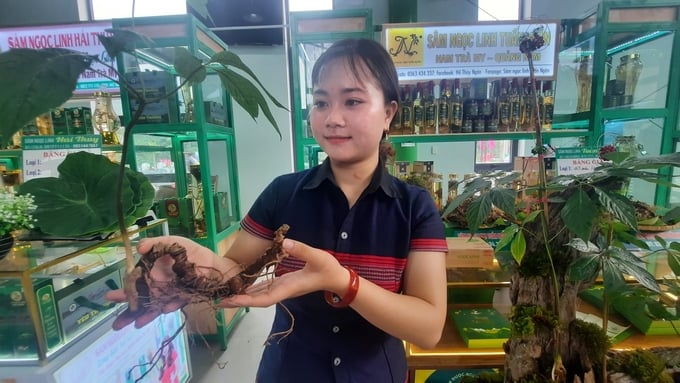
Ngoc Linh ginseng is called the "National Treasure" of Vietnam. Photo: Le Khanh.
Ginseng seedlings are prohibited from being exported from Korea due to stringent government regulations; they are only permitted to be exported after they have reached a minimum age of two years. With a cultivation area of approximately 15,000 hectares and a production value of approximately 800 billion won, ginseng has the highest annual export value of any agricultural product, at 270 million USD as of 2022.
The Korean Rural Development Administration has devised mass propagation technology through ginseng embryo cell induction to expedite the ginseng cultivation process. This has enabled the effective production of 40 tissue-cultured seedlings from a single plant in a single year, a feat that would have required 3-4 years for traditional seed propagation to achieve the same number of seedlings. Additionally, the survival rate of tissue-cultured seedlings that are sown in the soil exceeds 70%, surpassing that of conventional methods.
Ngoc Linh ginseng has been promoted in Vietnam since 2013. Conversely, this species of ginseng is exclusively found in mountainous regions with mild, humid climates, situated at elevations of 1,200 to 2,000 meters. This has restricted the potential for expansion and the cultivation area.
Vietnamese ginseng, like Korean ginseng, takes 5-7 years to be harvested, which presents substantial obstacles for Vietnamese ginseng producers. Capital constraints have prompted numerous individuals to abandon their pursuits. Additionally, Vietnamese ginseng is susceptible to counterfeiting due to the absence of specific regulations that guarantee the quality of "made in Vietnam" ginseng and safeguard the growing regions.
In order to cultivate a global reputation for Vietnamese ginseng, it is imperative that we emulate Korea's successful strategy. It is imperative to enhance research collaboration with Korea and other nations in order to determine the optimal course for Vietnamese ginseng.
Most importantly, it is imperative that stakeholders work together to establish a robust reputation for Vietnamese ginseng, thereby ensuring that the Vietnamese populace can consume high-quality ginseng and refrain from purchasing counterfeit products. It is necessary to establish specific regulations, develop high-quality varieties, and support producers in order to ensure the quality of Vietnamese ginseng is guaranteed to the world. It is now time to implement decisive policies.
Translated by Linh Linh
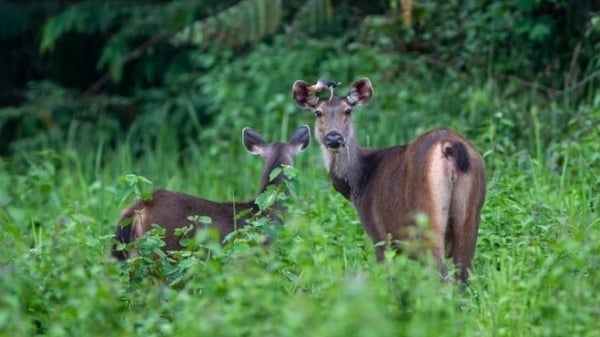
(VAN) WWF, GIZ, IUCN, UNDP call for biodiversity conservation and sustainable development must be regarded as a unity in strategies for a green future.
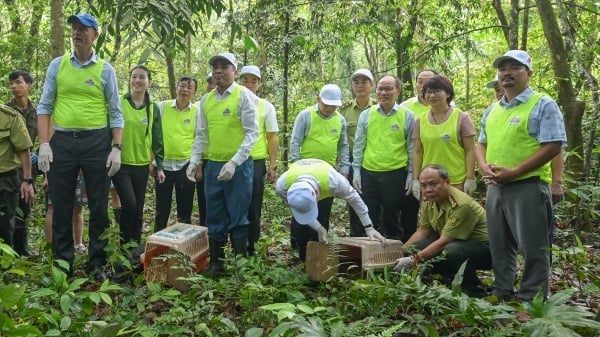
(VAN) On celebration of International Day for Biological Diversity, Deputy Minister Nguyen Quoc Tri called for practical actions to address nature and biodiversity conservation.

(VAN) Dr. Hoang Thi Thanh Nhan – Deputy Director of the Nature and Biodiversity Conservation Agency – highlighted this on the International Day for Biological Diversity, May 22, 2025.
![Ho Chi Minh city adapts to climate change: [2] Accelerating action](https://t.ex-cdn.com/nongnghiepmoitruong.vn/608w/files/chiqk/2025/05/22/4024-4220-bien-doi-khi-hau-1-100626_766.jpg)
(VAN) Clearly recognizing the challenges posed by climate change, Ho Chi Minh city has swiftly shaped its policies and implemented practical solutions to adapt.
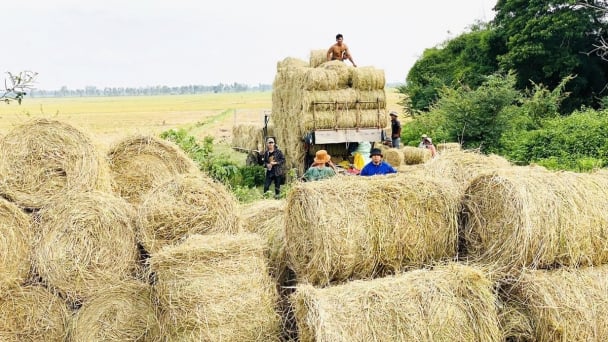
(VAN) Rice straw is no longer just a discarded byproduct, but it is becoming a green resource that helps farmers in the Mekong Delta reduce emissions and promote circular, sustainable agriculture.

(VAN) Other Effective Area-based Conservation Measures (OECMs) are solutions that contribute effectively to achieving the goals of the Kunming–Montreal Global Biodiversity Framework.
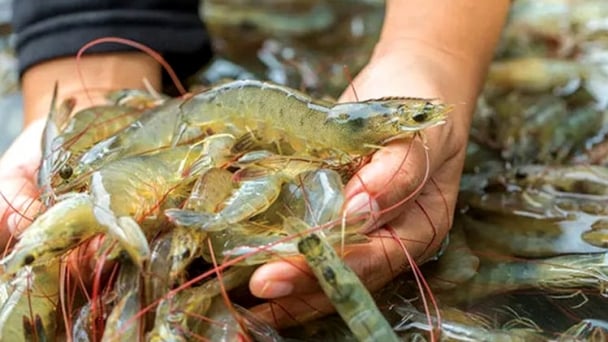
(VAN) A study assessing the carbon footprint of whiteleg shrimp farming in China shows the potential for carbon emission reduction through the use of renewable energy.